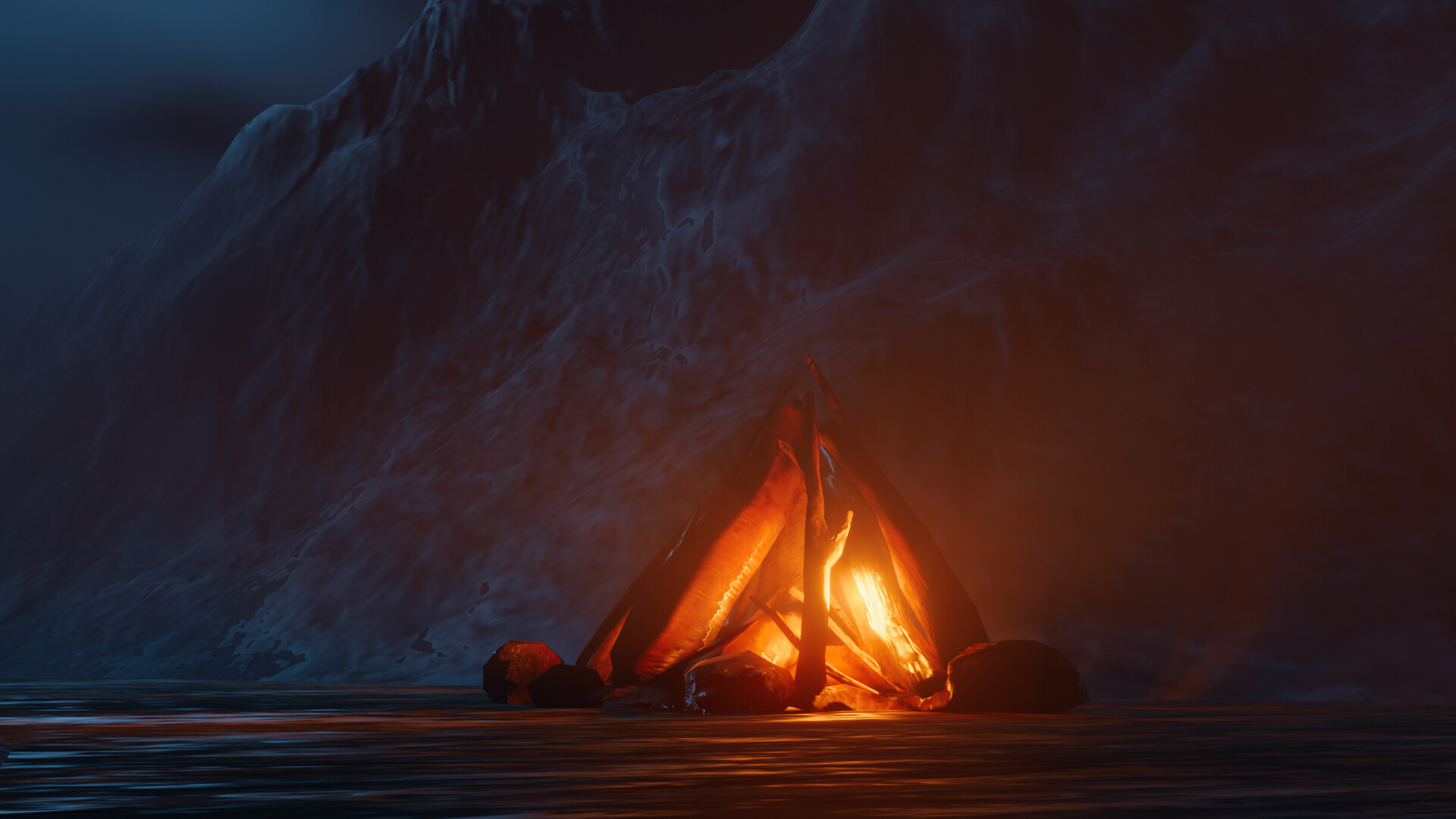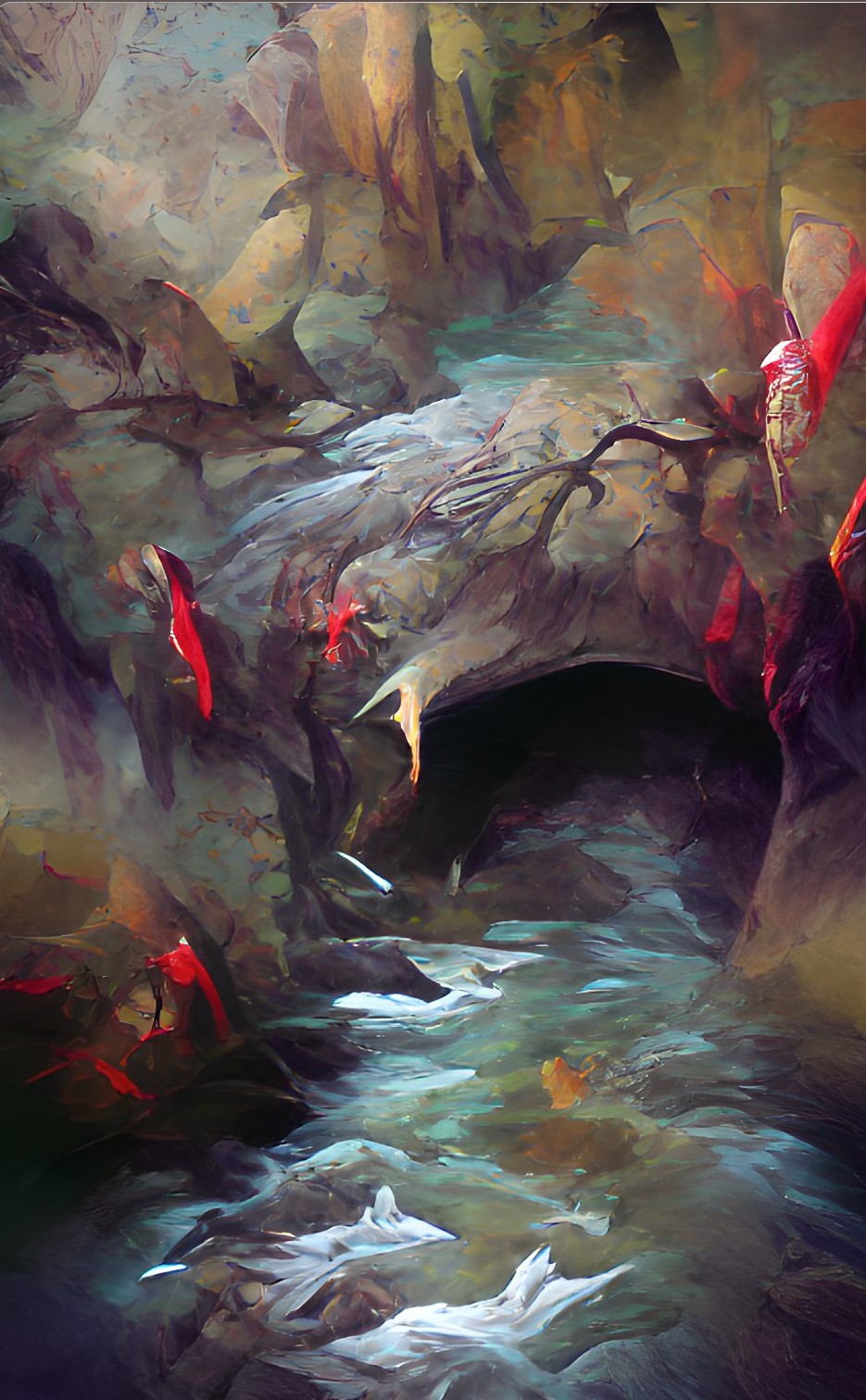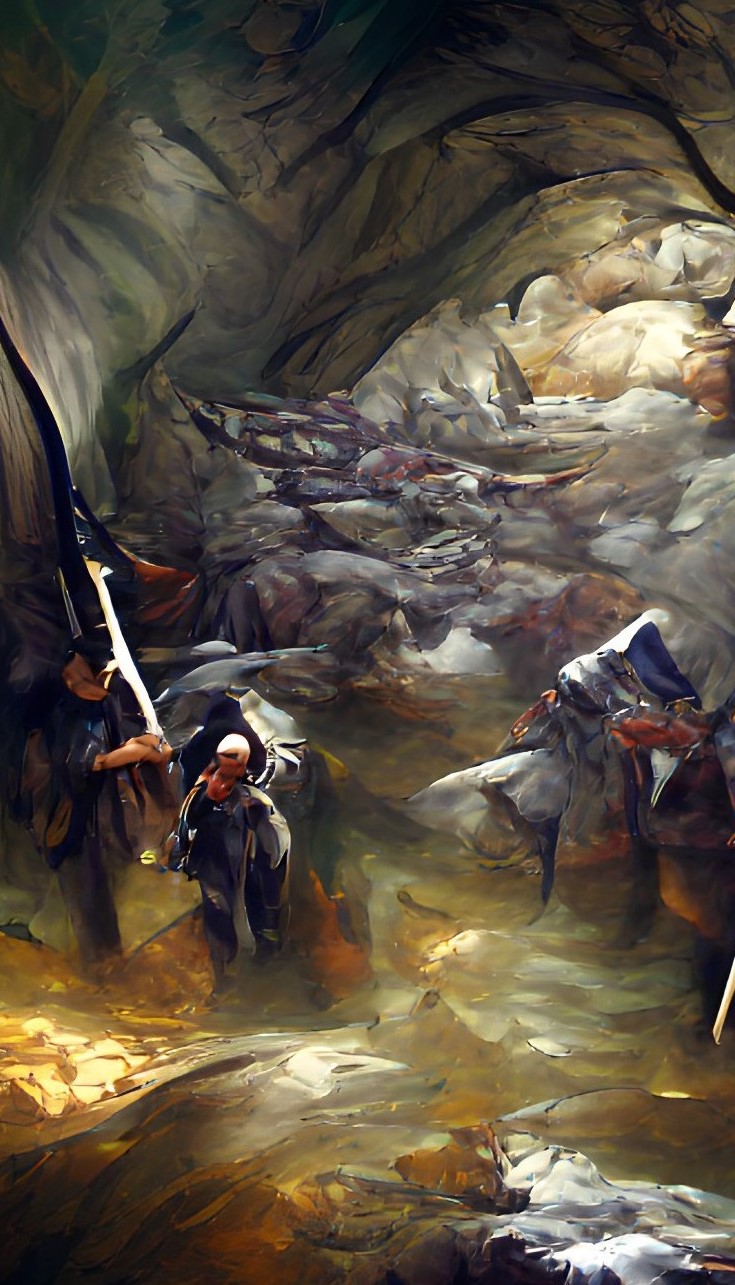Hávadtörsz, the Wolf-Kin Tribes
Overview
- Government: Military (feudal) aristocracy.
- Exports: Granite, crocoite dye, platinum, animal products (chitin, claw, bone, hide, etc).
- Stereotypes: Young Kin-warrior hungry for glory; dour but hard-working mushroom farmer; trader transporting goods on his armored beetle; low-born girl hoping to marry into the Kin; decadent administrator serving a high-ranking Kinsmen; Líkan candidate struggling to control the Beast Within.
Foreign Relations
To be expanded.Origin
Hávadall was one of the two divinities who benefited greatly from the Retreat to the Downside after the Chaos Wars. The sudden surge in population brought her great strength, and to reward her new followers she held a competition to seek out the most worthy. The final six were introduced to the full secrets of lycanthropy, becoming the first of the Líkan. Under the guidance of these powerful individuals, the hávadtöri managed to carve out a niche for themselves in the dangerous lands of the Downside. They relied on the hunt to sustain themselves, and the Líkan were very respected for the benefits they brought their families. This extends even to the current day, where the original six Líkan ancestors are worshiped as holy beings just below Hávadall herself. In time followers and direct relatives of the six organized themselves into tribes or clans called the Wolf-Kin, who worship the original six Líkan. Their very society is founded on these, and obligation to one's Kin is a key aspect of a person's life. Meanwhile the Kinless, those who do not belong to one of the Wolf-Kin clans, are stuck on the lower rung of the ladder with their only real way of escape being to marry into one of the Wolf-Kin.Structure
The Wolf-Kin do not bother overly much with building solid structures. They have carved out a few permanent residences near Hávadall's hallow where the Kin can return to, but most regular folk are holed up in tents made of animal hide, or settled into a small side-cave cordoned off with a curtain of algae. They are more decentralized than most people, who tend to stay near their divinities for protection. The Wolf-Kin roam around to expand their hunting territory, making temporary camps and staying on the move until it is time to return with their haul. Being away from divine protection is dangerous however and these expeditions suffer frequent casualties, but they are necessary to bring in enough food and materials for tools and weaponry.Culture
The Wolf-Kin are the defining part of hávadtöri society. There is a large cultural split between the proud Kinsmen and the Kinless who are forced to live on the fringes of society. But even within the Kin there are stark cultural differences between the warrior Kin who chase glory and the regular workers and farmers who see none of that. In both cases they are a stoic and fiercely loyal people who aim to do right by their Kin. But the warriors can be a tad reckless and overeager to go out there and prove themselves. All of them, nearly without exception, seek to prove themselves so that they may receive the gift of lycanthropy and become the pride and joy of their Kin. But while they chase glory and recognition, there is also a certain realism ingrained in these warriors, or at least the more experienced among them. When they fight it is not against other people, but in life-or-death situations against the beasts and monsters that stalk the land. There is no place for honor or pride on such a battlefield, it is about survival. To live and bring back your bounty to your Kin. A successful hunt can set a clan of Kin for weeks to months depending on the its size. The farmers and other laborers are more dour in their attitudes. They live a hard live and know that nothing comes easy. They do not waste, because they know they cannot. Parasites or mold can ruin entire harvests and leave them starving, so they herd insects for an additional source of food. In times of scarcity even the dead are used as fertilizer to try and get at least some successful harvest. Still, they continue to swing the pick and grow the mushrooms, because it is better to toil and live than to die of hunger.Politics
The power of the Wolf-Kin comes from the Kinsmen in it, the tools and the land they possess. But it also comes from a mandate, the fact that they are descended from the original six. The six are worshiped and give the Wolf-Kin a divine right to rule. Each Kin rules its own people and the farmland belonging to it, but they all answer to one person: the Warleader.The Warleader is a person appointed by Hávadall herself, who mediates between the Kin, settles disputes and carries out justice. Each Wolf-Kin is vassal to the Warleader, but the Warleader only rules by a mandate that is based on communal agreement. It is a constant back-and-forth, with each of the Kin trying to take more power for itself.
Food and Farming
Food is scarce in these lands. Hávadall may have created the Csoda river, and there are several farms around it, but not enough to feed everyone. They grow mushrooms of varying sizes along the river's fertile lands, and this is a significant portion of the hávadtöri diet. This is supplemented by algae and kelp found in the river and the nearby lakes, as well as shellfish (e.g. cave clams) that people find or even raise here. They also raise slugs, snails and newts to add some meat to their diet. Simple dishes of mushroom and algae with the occasional piece of meat or shellfish is the usual diet for the common worker. But to feed all the Kinsmen, the hunt is indispensable. When the Kin-warriors return with slain prey, each and every part is used. Chitin, claw and bone are used for tools and weapons, but the varied meats form a cornerstone of the upper hávadtöri cuisine, while also being a major reason why they have avoided mass starvation. Some of these meats are chewy and not too appetizing but others, such as páncelbogár belly, are considered a delight and reserved for the higher-ranking Kinsmen.Tools and Weapons
As mentioned, the hávadtöri use every part of the prey they capture, and for good reason. There are no iron veins anywhere near the hallow of Hávadall and what few usable metal they have obtained is from trade. Thus they rely heavily on these parts to arm and cloth themselves. Most clothing consists of simple animal hides, tanned and dyed with crocoite ore. The rich may also wear ornaments made of platinum, which is the other metal found here. Armor is often made from chitin of large insectoid creatures, or the scales of the occasional large reptile. Weapons are made of claw and fang, and the same goes for tools. For example, the claws of a staukata are invaluable for the creation of pickaxes and piercing weapons. There is also a cultural component to the use of animal parts as weaponry or armor. The Kin hold the strong belief that a warrior is only as good as the prey he has killed. This harkens back to the importance hunters have in providing food and tools for their Kin of course. As such the equipment that warriors use in battle is often obtained from their own hunts, and it signifies their status among the warrior Kin. The one exception is that weapons may be passed down to a direct descendant, so that they do not go to waste. But once a person has claimed their first prey they tend to relinquish these inherited weapons until they prove worthy of them. The best weapons and arms are reserved for only the greatest warriors.Organizations
The Wolf-Kin are the major political and military force around here, and they are what hávadtöri society revolves around. The are in a constant struggle for power trying to one-up each other, and each has tried to carve out a niche for itself to get or stay on top.Below they are listed in order of influence.
Kin of András
Descended from András the Golden, this is the most influential of the Wolf-Kin clans. They have been at the top for nearly a decade now, and they have a good rapport with the current elderly Warleader who originates from the Kin of András himself. However corruption has started to fester in some of the upper ranks, who have grown lazy and decadent. In cavern tunnels people whisper of how they no longer represent the warrior values that the Kin were based on, and they have lost much respect among the common people.Kin of Gyen
Gyen was the weakest of the original six Líkan. He was famously unable to achieve the full powers of regeneration. Interestingly enough, this also meant he wasn't as bothered by the presence of silver and he was able to craft silver weapons specifically meant as a safety measure to take down Líkan who had gone rogue. In the current day they are the most populous of the Kin, and also one of the most influential. They are known for their expert craftsmen, and the best weapons and arms come from the workshops of their Kinsmen.Kin of Zsolt
The Kin of Zsolt is home to the best trackers, who know the lay of the land better than anyone. They may not have weapons of the same quality as the Gyen or Andrási, but they are capable of frequently getting the drop on their prey by using their knowledge of the terrain, and working together to take them down. They also have a significant influence in the trade of psychoactive fungi however, which is not entirely legal under the current mandate. So for now these are limited to backroom dealings, or handled through unaffiliated back-tunnel thugs that they can cut off when needed.Kin of Szónja
The stories tell of Szónja's ferocity in battle, and her indomitable nature. Her Kin still display these traits to some extent, but they have become slightly twisted. Not too long ago they were the weakest of the Kin after a series of catastrophic hunts that saw the majority of their veteran warriors wiped out. They realized that they needed to be stronger, and they looked towards the monsters that had beaten them. They reasoned that if the idea of the Beast Within applies to the Líkan, it also applies to other creatures.Now they drape the fresh corpses of their prey over their bodies, they study the insides and the traits of these creatures. And with the aid of certain rituals and magic (or even the káoszmag according to some rumors), they try to become more like them. They have grown in power, but the others distrust and dislike them.





Comments